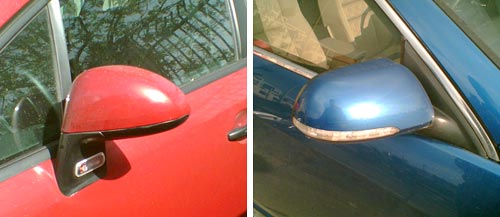Still in NYC, following the auspicious IORG launch, and took the opportunity to visit the Empire State Building.
I was totally unprepared for what I saw.

Of course, It’s tall, and the view from the top is incredible, but somehow I was expecting a ‘has been’. After all, this skyscraper was built some 80 years ago, in the great depression, the days when giant apes were swatting at quaint biplanes… the world is full of much taller towers today.
I couldn’t have been more wrong. The Empire State is still the tallest in Manhattan, following 9/11; and it totally dominates the Midtown skyline. But it is its superb architectural design that sets it apart. Its iconic tearraced lines thrust skyward in a perfect platonic expression of UP and STRENGTH that none of the funky new Glass and Gossamer skyscrapers can hold a candle to (speaking of strength, this tower took a direct hit by a twin engined B25 bomber in 1945 with only relatively minor damage).
This assertive presence is complemented by a magnificent attention to detail. All lobbies and corridors are faced in marble. Tasteful art deco ornaments add a twenties touch that is just right. You can make snide phallic jokes all you want, but It’s all simply beautiful, and in a way that no photo can do justice to.
Makes you proud to be an engineer!



 The third photo shows what happens in lower ambient light. There is an intermediate light level when the transition from dark numerals on bright silver to white backlit numerals on dark silver just evens out, and the numbers become almost invisible. In fact, since the backlight source is localized, different keys reach this point at different light levels; in the photo the “7” is in day mode, the “0” is in night mode, and the 5 is barely visible – just like the oil spot on those old books.
The third photo shows what happens in lower ambient light. There is an intermediate light level when the transition from dark numerals on bright silver to white backlit numerals on dark silver just evens out, and the numbers become almost invisible. In fact, since the backlight source is localized, different keys reach this point at different light levels; in the photo the “7” is in day mode, the “0” is in night mode, and the 5 is barely visible – just like the oil spot on those old books.




 represent stuff in the real world by abstract marks on a tablet, they were on the path to real writing, starting with pictographs and ending with true cuneiform. Here is another exhibit from the Pergamon, which seems to be halfway through the transition. Wayda go!
represent stuff in the real world by abstract marks on a tablet, they were on the path to real writing, starting with pictographs and ending with true cuneiform. Here is another exhibit from the Pergamon, which seems to be halfway through the transition. Wayda go!



 objects. In fact, tools are arguably what distinguished our hominid ancestors from the animals. For my part, as a maker of things for pleasure and work, tools – the workshop kind – have been my lifelong possessions and companions, so I will blog about them for a bit.
objects. In fact, tools are arguably what distinguished our hominid ancestors from the animals. For my part, as a maker of things for pleasure and work, tools – the workshop kind – have been my lifelong possessions and companions, so I will blog about them for a bit.

